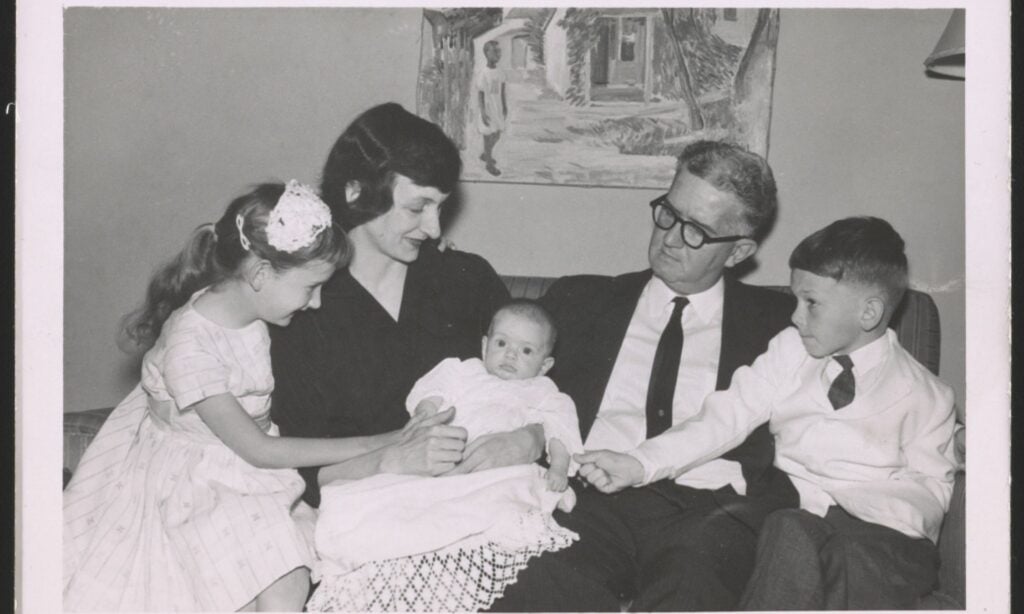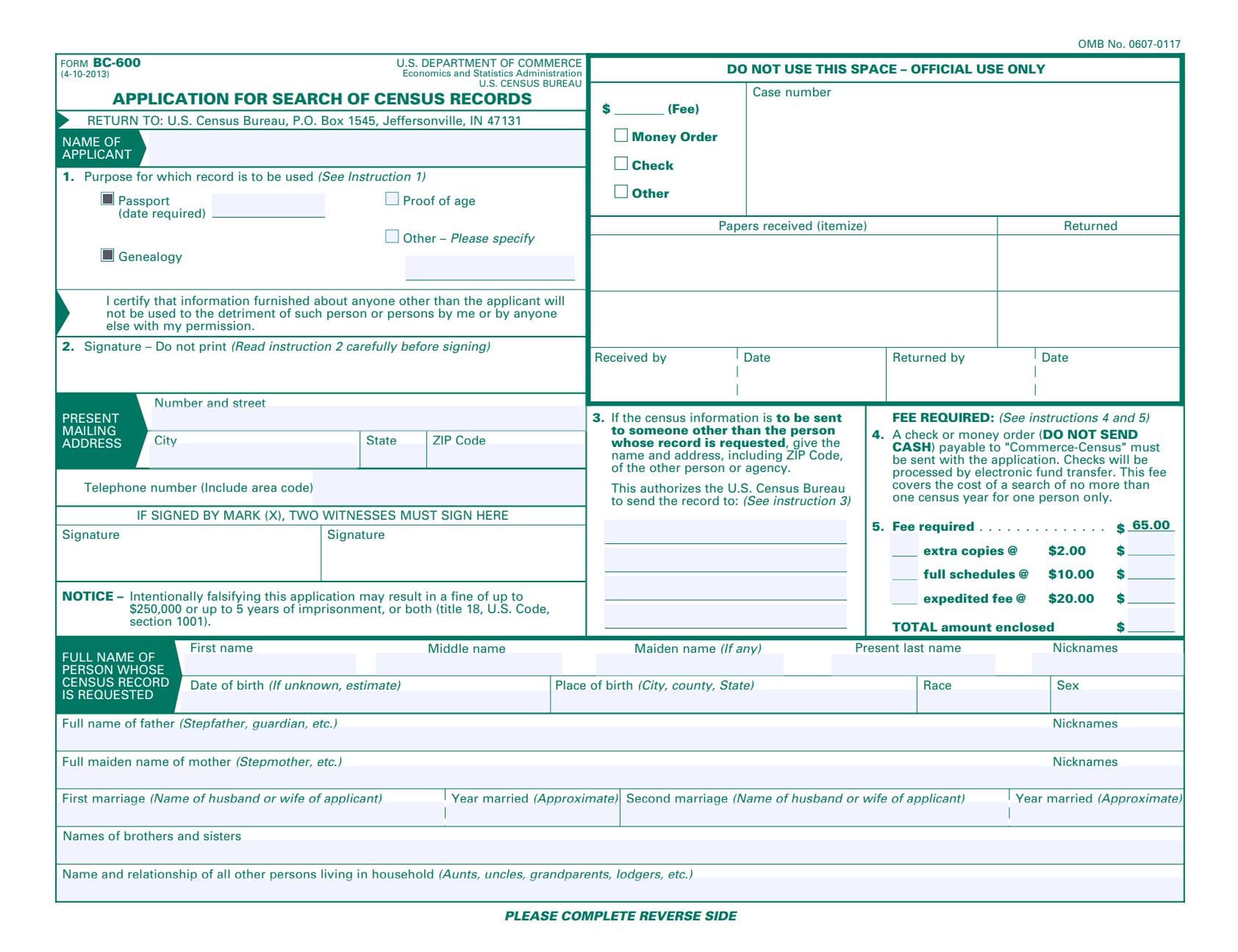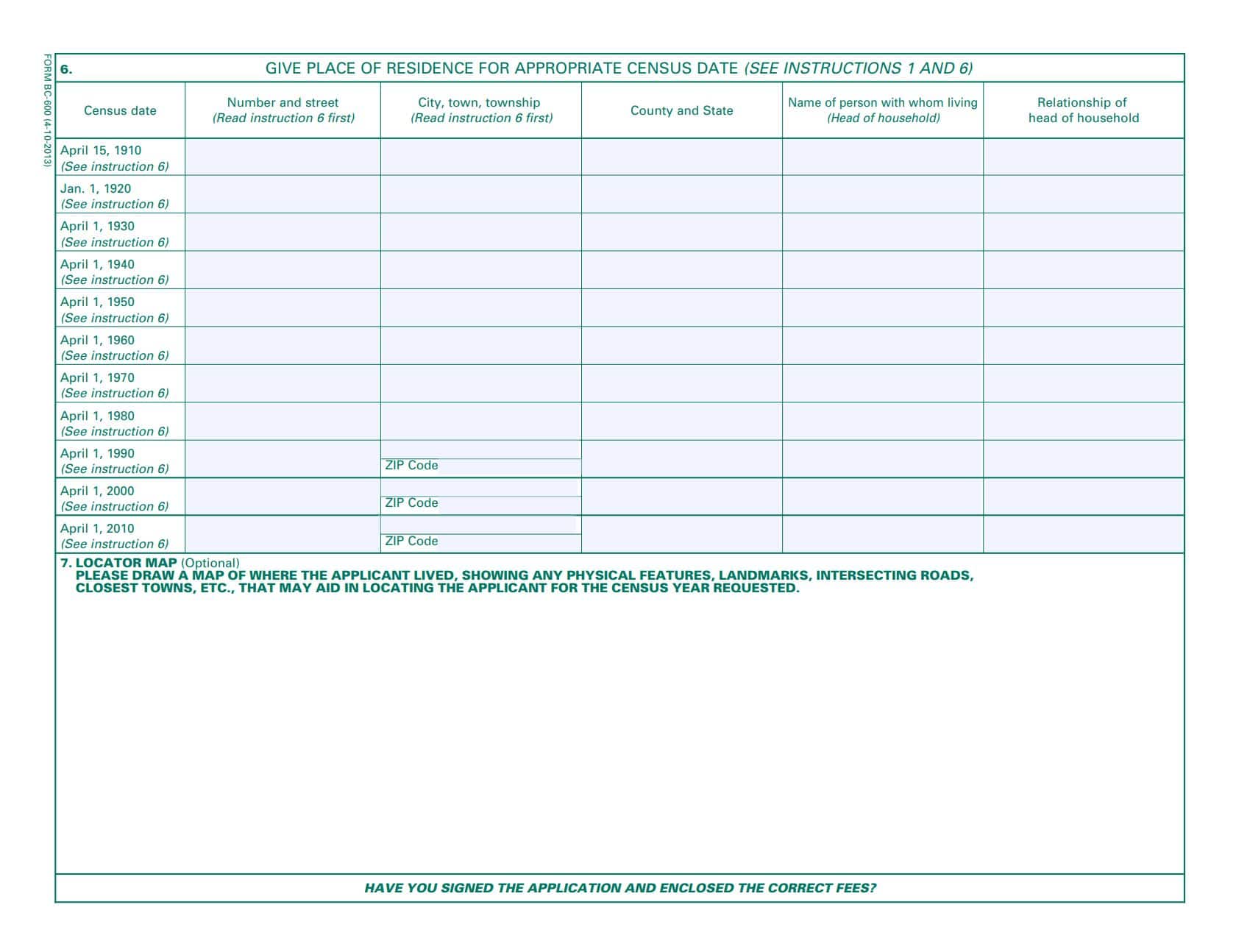Every 10 years, family historians stop everything they’re doing to dig into the newest release of the U.S. Federal Census. The April 1, 2022 release of the 1950 census meant most of us were heads-down in the various databases providing access to those cherished pages for weeks.
After a while, though, the newness wears off. Even as we’re accessing all of the census records that have been made available to date (1790 to 1950), we’re secretly pining for the next decade’s census release. What if I told you there’s a way to access certain details of the next six yet-to-be-released census records — the 1960, 1970, 1980, 1990, 2000 and 2010 versions to be specific? Wouldn’t that raise your genealogical curiosity?
But before you visit the U.S. Census Bureau website looking for pages of these census records — or ask them if they’ve suddenly done away with the 72-year-rule (they have not) — read on.
How Can I Access Details from 1960 – 2010 Census Records?
The details to which I’m referring, and which you can access, are not a “census record” in the traditional sense. Accessing the details of the 1960, 1970, 1980, 1990, 2000 and 201o census years involves restrictions, guidelines, and even fees — but it all might well be worthwhile if it helps you to fill in some of the more recent blanks in your family tree.
For a “congressionally mandated fee” of $65, the bureau will “search the confidential records from the federal population censuses of 1910 through 2010 and issue an official transcript of the results.” The service is called an age search as many people use the results of this search as proof of age.
Access the 1960-2010 Census via the Age Search
Since the census records from 1910 through 1950 are publicly available at the National Archives and accessible on FamilySearch for free, we’ll focus on the benefits of using this service for the 1960 to 2010 records.
The most important caveat to note is that this fee covers one search of one census, NOT a search of all census records for a designated time period. Thus, a search of the 1960 census for one person is $65, a search of the 1970 census for that person is another $65, and so on. If you were to want your personal information spanning all census records from 1960 to 2010, your grand total for the standard search (excluding expedited search fees, extra copies, etc.) would be $390. Yikes.
Here’s another important note for genealogists: Information from this search will only be released to “the named person, his/her heirs, or legal representatives.” This means you can order your own information, or ask a living family member to order theirs for the purposes of your research.
However, an age search for a deceased person requires a certified copy of their death certificate, and the application must be signed by a blood relative in the immediate family (parent, brother, sister, or child), a surviving wife or husband, the administrator or executor of the deceased’s estate, or a beneficiary by will or insurance. Legal evidence of the last two relationships is required, and additional restrictions apply for information of minor children and mentally incompetent persons.
Depending on who in your family is able or willing to make the request and provide proper documentation you may be able to gain access to census records (1960-2010) for a variety of people in your family tree – such as parents, grandparents or even great grandparents, great aunts and uncles, close cousins etc. Just be sure to ask an immediate family member or other proper representative to make the request for each person of interest.
The transcripts available from the age search service can help individuals qualify for social security and other benefits, apply for a passport, or prove a relationship in an estate dispute. For family historians, though, this information can provide details on deceased immediate family members confirm family living situations, or simply satisfy our curiosity about what information was provided about us when we were young. There are lots of reasons for requesting an age search!
What You Get from an Age Search
The results of a U.S. Census Bureau age search is an official census transcript of specific information for the individual designated in the search application only. Sadly (for genealogists), you do not receive an image of a census enumeration page. The data included varies per census year.
Here’s what you can expect to receive in a transcript from searches of the 1960 to 2010 census records:
- Census year (1960 to 2010)
- County where taken (1960 to 1980)
- State where taken (1960 to 2010)
- Name (1960 to 2010)
- Relationship to head of household (1960 to 2010)
- Name of person in whose household you were counted (1960 to 2010)
- Age at the time of the census (1970 to 2010)
- Date of birth
- Year and quarter (1960)
- Month and year (1970 and 1980)
- Year (1990)
- Month/day/year (2000 and 2010)
The bureau does not guarantee they will be able to locate your information requested. You will be notified if they can’t provide the information, although your fee will not be returned.
But wait — there’s more!
There’s another option on the age search application that might be of interest to family historians. For an additional $10 per census search, you may request a “full schedule,” which is described on the application as “the complete one-line entry of personal data recorded for that individual ONLY.”
So, in addition to the information listed above in the transcript form for an individual, you’ll also receive “whatever other information appears on the named person’s record in the original schedule, but only for THAT PERSON.”
Again, though, there is a limitation: Unfortunately, full schedules are not available for census years 1970 through 2010, so this is only useful for 1960 at this time.
How to request an age search from the U.S. Census Bureau
The Application for Search of Census Records (Form BC-600) is available online as a fillable PDF, but it must be printed and signed by the requestor before it is mailed. As you can see below, the front page of the application is fairly straightforward.
The information you provide on the reverse side of the application will help the census bureau researchers to locate the records you request. For the census you wish the bureau to search, you’re asked to provide your address, the head of the household, and your relationship to that person as of the date the census was taken. There’s also a section where you can draw a map of your location on that census date, including landmarks, closest towns, or intersecting roads.
As a family historian, you’ve probably seen countless situations where family members are not listed in the census where you think they are supposed to be in the census. Either they’re not at the expected address, or they’re not living with the people with whom you expected them to reside. Just because the census records you’re referencing with a census bureau age search are more recent doesn’t mean they’ll be any less frustrating!
As you would when searching any other census record, think about where the person would be and who they would live with as of the enumeration date (listed above on the age search application). This might require you to ask other family members for help with addresses or locations, or even do some preliminary research, perhaps delving into old phone books or city directories.
For example, my date of birth is three days after the enumeration date of one of the census years. My birth certificate lists only a rural route as my parents’ home address at the time, and from what I’ve learned, we lived in a mobile home community that no longer exists. If I were to request an age search for the census of the year I was born, I’d probably have a hard time providing the information requested on the application unless I found additional details in a local directory.
Nevertheless, these sorts of challenges shouldn’t discourage you from ordering an age search transcript for you or a family member if you feel that the information will further your genealogical research. We’re genealogists! We’re not intimidated by challenges; we’re motivated by them!
Get more help with census records from Family History Daily here – including our Complete Guide to U.S. Census Records Year by Year. For special help with the 1950 census see our courses.
By Patricia Hartley. Patricia has been researching family history for over 30 years and has an M.A. in Public Relations/Mass Communications from Kent State University.



Hi Betty. Have you made any progress? If you message me some details I can try to help.
Making your tree “Public” allows all PAYING subscribers to view your tree. Those people with free Ancestry accounts cannot view any of the information on a Public tree. It is a misleading play on words made to entice people to buy memberships.
I found that daddy was not my father about 3 years ago. My biological father died when I was 9. Because I’m not listed on any census with him how do I obtain any information. My 1/2 sister refuses to even talk to me.